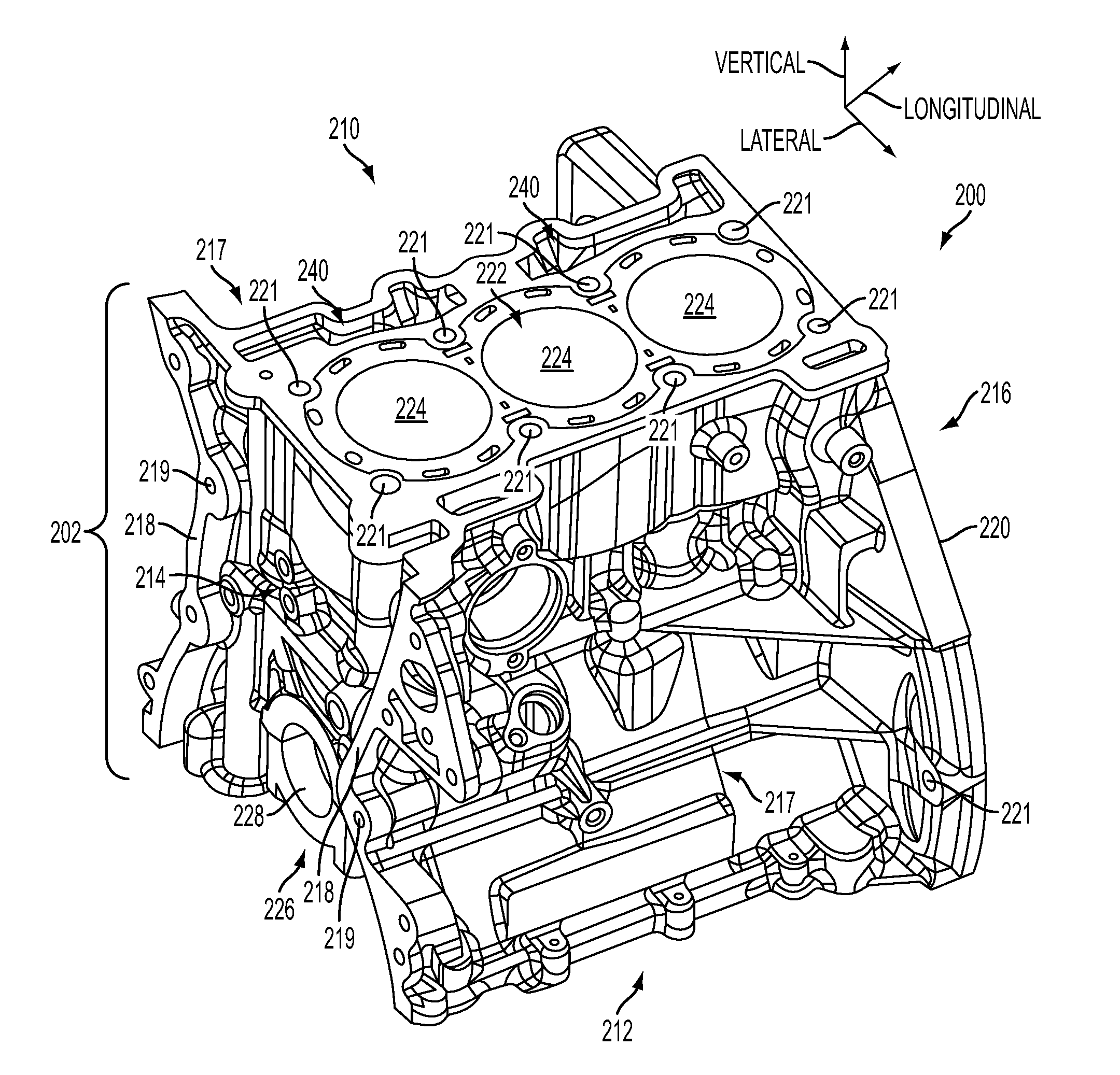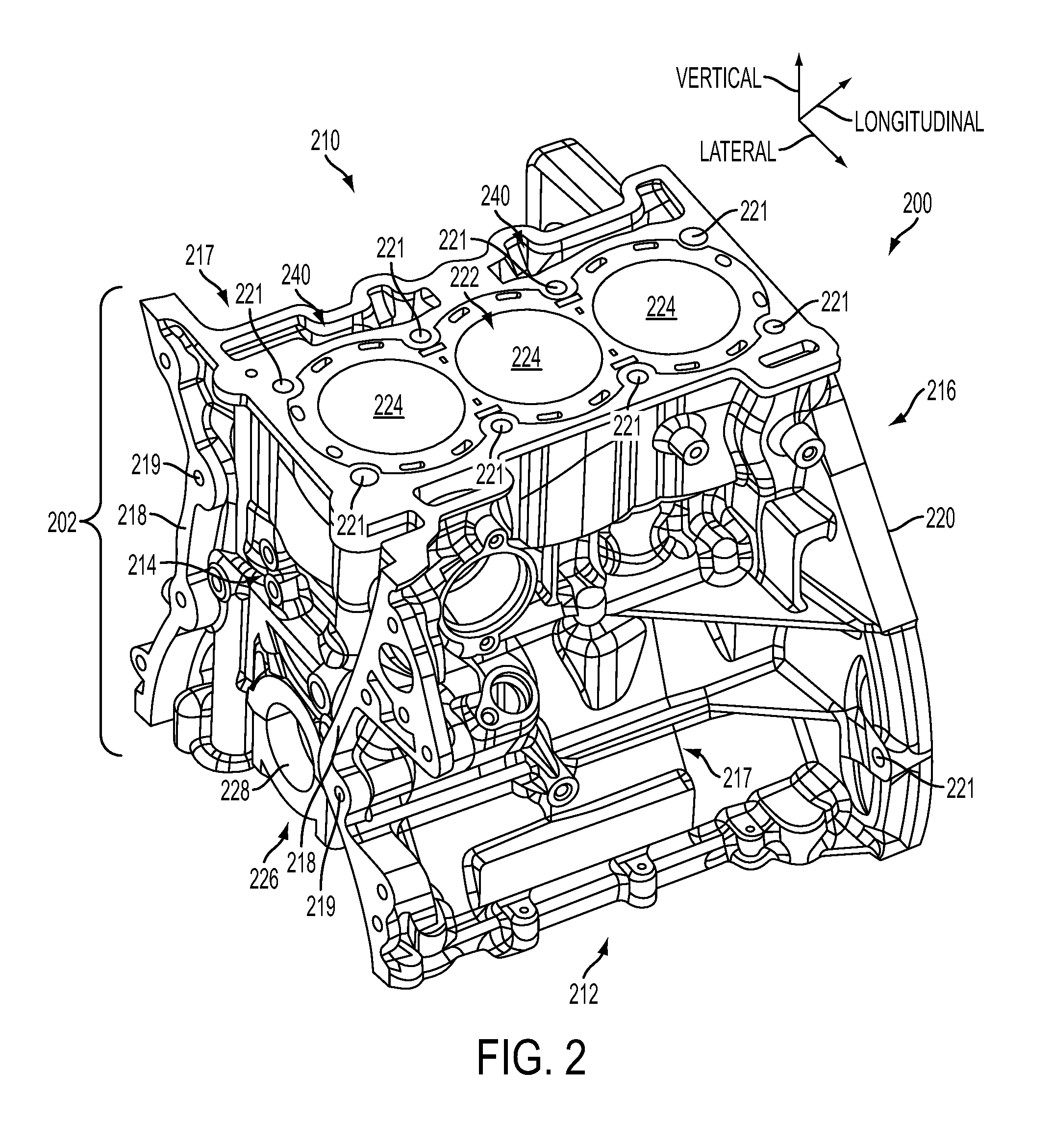Engine having composite cylinder block
a composite cylinder block and engine technology, applied in the direction of cylinders, machines/engines, casings, etc., can solve the problems of cast iron cylinder blocks having a low strength-to-weight ratio, affecting the performance of the engine, so as to reduce the size and wear of the combustion chamber, reduce the volume-to-weight ratio, and reduce the friction coefficient
- Summary
- Abstract
- Description
- Claims
- Application Information
AI Technical Summary
Benefits of technology
Problems solved by technology
Method used
Image
Examples
Embodiment Construction
[0017]An engine having a composite cylinder block with an integrally molded cylinder liner defining the boundary of at least one cylinder described herein. The cylinder liner may be constructed out of a metallic material while the cylinder block may be constructed out of a thermal-set or thermo-molded composite material, such as a polymeric material, carbon fiber, etc. In this way, a material having a high strength to weight ratio may be used to construct the block surrounding the cylinder liner. Therefore, a desired structural integrity of the block may be maintained while decreasing the weight of the block or the structural integrity of the block may be increased without increasing the block's weight. Furthermore, providing an integrally molded metallic cylinder liner in the composite cylinder block enables a different material better suited to handle the heat and pressure generated via combustion to be used for the combustion chambers. In this way, the characteristics of various ...
PUM
 Login to View More
Login to View More Abstract
Description
Claims
Application Information
 Login to View More
Login to View More - R&D
- Intellectual Property
- Life Sciences
- Materials
- Tech Scout
- Unparalleled Data Quality
- Higher Quality Content
- 60% Fewer Hallucinations
Browse by: Latest US Patents, China's latest patents, Technical Efficacy Thesaurus, Application Domain, Technology Topic, Popular Technical Reports.
© 2025 PatSnap. All rights reserved.Legal|Privacy policy|Modern Slavery Act Transparency Statement|Sitemap|About US| Contact US: help@patsnap.com



